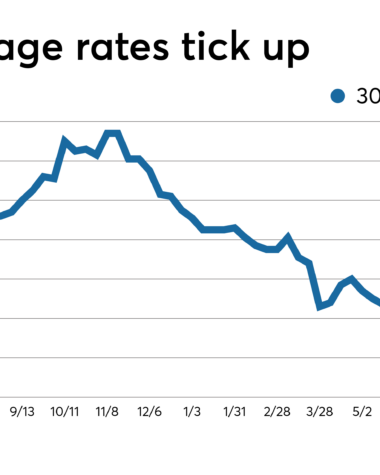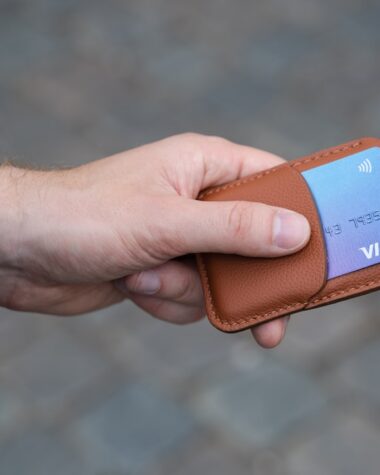Refinancing a bike loan can be a strategic financial move for many riders. One of the primary benefits is the potential for lower interest rates. If you initially secured your loan when interest rates were higher, or if your credit score has improved since then, refinancing could allow you to secure a more favorable rate.
This reduction in interest can lead to significant savings over the life of the loan, allowing you to allocate those funds toward other expenses or even toward upgrading your bike. Another advantage of refinancing is the opportunity to adjust the loan term. Riders may find themselves in a position where they want to pay off their loan more quickly or, conversely, extend the term to lower monthly payments.
By refinancing, you can tailor the loan to better fit your current financial situation. For instance, if you are experiencing a temporary financial setback, extending the term can ease monthly cash flow pressures. Conversely, if you have the means to pay off your bike sooner, a shorter term can save you money on interest payments overall.
Key Takeaways
- Refinancing your bike loan can lead to lower monthly payments and reduced interest rates, saving you money in the long run.
- Before refinancing, consider factors such as your current interest rate, the remaining loan term, and any prepayment penalties.
- Calculate potential savings by comparing your current loan terms with the new loan terms, taking into account any fees associated with refinancing.
- To refinance your bike loan, gather necessary documents, shop around for the best rates, and apply for the new loan.
- Common mistakes to avoid when refinancing include not considering all associated costs, neglecting to check your credit score, and not comparing multiple offers.
- Explore different refinancing options such as traditional banks, credit unions, and online lenders to find the best deal for your bike loan.
- Refinancing can impact your credit score, so it’s important to understand how it may affect your overall credit health.
- When looking for the best refinancing deal, consider factors such as interest rates, loan terms, and any additional fees or charges.
Factors to Consider Before Refinancing Your Bike Loan
Before diving into the refinancing process, it is crucial to evaluate several key factors that could influence your decision. First and foremost is your current interest rate compared to prevailing market rates. If rates have dropped significantly since you took out your original loan, refinancing may be a wise choice.
However, if rates have remained stable or increased, it may not be beneficial to pursue refinancing at this time. Another important consideration is your credit score. Lenders typically offer better terms to borrowers with higher credit scores.
If your credit score has improved since you first obtained your bike loan, you may qualify for a lower interest rate upon refinancing. Conversely, if your credit score has declined, it could result in higher rates or even disqualification from refinancing options altogether. Understanding your credit situation will help you make an informed decision about whether refinancing is right for you.
How to Calculate Potential Savings from Refinancing

Calculating potential savings from refinancing involves a few straightforward steps. Start by gathering information about your current loan, including the remaining balance, interest rate, and monthly payment amount. Next, research current interest rates for bike loans to determine what rate you might qualify for if you refinance.
Once you have this information, you can use it to create a comparison of your current loan versus the potential new loan. To calculate your savings, consider using an online loan calculator that allows you to input both your current loan details and the proposed refinanced loan terms. This tool will help you visualize how much you could save each month and over the life of the loan.
Additionally, factor in any fees associated with refinancing, such as application fees or prepayment penalties on your existing loan. By subtracting these costs from your total savings, you can arrive at a clearer picture of whether refinancing is financially advantageous.
Steps to Refinance Your Bike Loan
| Step | Description |
|---|---|
| 1 | Check your credit score |
| 2 | Research lenders and compare rates |
| 3 | Gather necessary documents (income, ID, current loan details) |
| 4 | Apply for refinancing with chosen lender |
| 5 | Review and compare loan offers |
| 6 | Choose the best offer and finalize the loan |
| 7 | Pay off your existing bike loan |
| 8 | Enjoy your new, refinanced bike loan |
The process of refinancing a bike loan typically involves several key steps that require careful attention to detail. First, assess your current financial situation and determine what you hope to achieve through refinancing—whether it’s lowering your monthly payment, reducing the interest rate, or changing the loan term. Having clear goals will guide your search for the best refinancing options.
Next, shop around for lenders who specialize in bike loans or personal loans that can be used for refinancing. Gather quotes from multiple lenders to compare interest rates and terms. It’s essential to read the fine print and understand any fees associated with each option.
Once you’ve selected a lender that meets your needs, you’ll need to complete an application process that may involve providing documentation such as proof of income, credit history, and details about your current loan. After submitting your application and receiving approval from the lender, review the new loan terms carefully before signing any agreements. Ensure that the new terms align with your financial goals and that you fully understand any implications of the refinancing process.
Once everything is in order and you’ve signed the necessary paperwork, the lender will pay off your existing loan, and you’ll begin making payments on the new loan.
Common Mistakes to Avoid When Refinancing Your Bike Loan
Refinancing a bike loan can be beneficial, but there are common pitfalls that borrowers should be aware of to avoid costly mistakes. One frequent error is failing to shop around for the best rates and terms. Many borrowers may settle for the first offer they receive without exploring other options.
This can lead to missing out on better deals that could save them money over time. Another mistake is neglecting to read the fine print of the new loan agreement thoroughly. Borrowers may overlook important details such as prepayment penalties or hidden fees that could negate any potential savings from refinancing.
It’s crucial to understand all aspects of the new loan before committing to ensure that it aligns with your financial goals and does not introduce unexpected costs.
Exploring Different Refinancing Options for Your Bike Loan

When considering refinancing options for a bike loan, borrowers have several avenues to explore. Traditional banks and credit unions often offer competitive rates for personal loans that can be used for refinancing existing bike loans. These institutions typically have established reputations and may provide favorable terms based on their relationship with customers.
Online lenders have also become increasingly popular in recent years due to their convenience and often lower overhead costs, which can translate into better rates for borrowers. Many online platforms allow users to compare multiple offers quickly and easily, making it simpler to find a deal that suits their needs. Additionally, peer-to-peer lending platforms can provide alternative financing options by connecting borrowers directly with individual investors willing to fund their loans.
The Impact of Refinancing on Your Credit Score
Refinancing a bike loan can have both positive and negative effects on your credit score, depending on how it is managed. When you apply for a new loan, lenders will conduct a hard inquiry on your credit report, which can temporarily lower your score by a few points. However, if you successfully refinance and make timely payments on the new loan, this can positively impact your credit score over time by demonstrating responsible borrowing behavior.
Moreover, if refinancing allows you to reduce your overall debt-to-income ratio by lowering monthly payments or consolidating debt into one manageable payment, this can further enhance your credit profile. Maintaining low credit utilization and making consistent payments are key factors in building a strong credit history, which can lead to better financing options in the future.
Tips for Finding the Best Refinancing Deal for Your Bike Loan
To secure the best refinancing deal for your bike loan, it’s essential to approach the process with diligence and preparation. Start by checking your credit report for any inaccuracies or areas that need improvement before applying for refinancing. Addressing any issues beforehand can help you qualify for better rates.
Next, consider timing when seeking refinancing options. Interest rates fluctuate based on economic conditions; therefore, monitoring market trends can help you identify an opportune moment to refinance. Additionally, don’t hesitate to negotiate with lenders; many are willing to work with borrowers who present competing offers from other institutions.
Finally, take advantage of online resources and tools designed to help borrowers compare rates and terms across multiple lenders quickly. Websites that aggregate lending options can save time and provide valuable insights into which lenders offer competitive deals tailored to your specific needs. By being proactive and informed throughout the refinancing process, you can maximize your chances of securing a favorable deal that aligns with your financial goals.
FAQs
What is a bike loan refinance?
Bike loan refinance is the process of replacing an existing bike loan with a new loan, typically with better terms such as lower interest rates or monthly payments.
Why would someone consider refinancing a bike loan?
People may consider refinancing a bike loan to take advantage of lower interest rates, reduce monthly payments, or to change the loan terms to better suit their financial situation.
What are the potential benefits of refinancing a bike loan?
Potential benefits of refinancing a bike loan include saving money on interest, lowering monthly payments, and potentially paying off the loan faster.
What factors should be considered before refinancing a bike loan?
Before refinancing a bike loan, it’s important to consider the current interest rate, the remaining loan term, any prepayment penalties, and the potential impact on credit score.
How does the refinancing process work for a bike loan?
The refinancing process typically involves applying for a new loan, having the new lender pay off the existing loan, and then making payments to the new lender according to the new loan terms.
Can anyone refinance a bike loan?
Not everyone may qualify for bike loan refinancing. Lenders will consider factors such as credit score, income, and the value of the bike when determining eligibility for refinancing.
Are there any fees associated with refinancing a bike loan?
There may be fees associated with refinancing a bike loan, such as application fees, origination fees, and potentially prepayment penalties from the existing lender. It’s important to carefully review the terms and fees before proceeding with refinancing.







